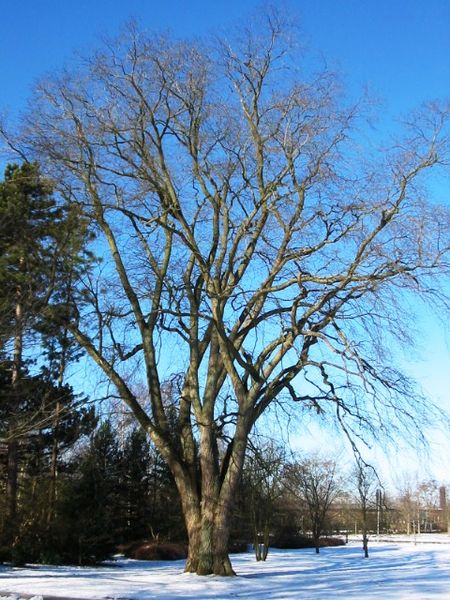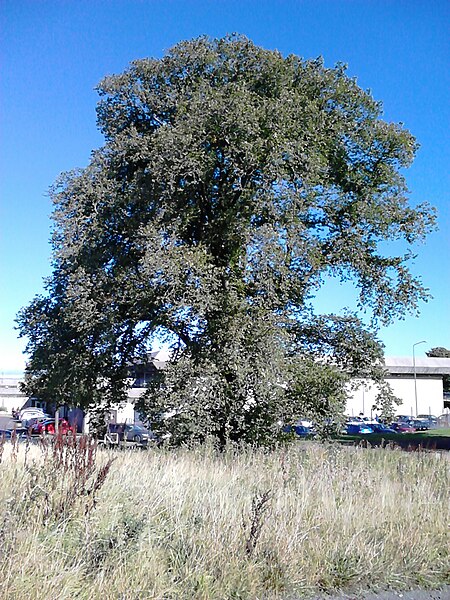Ulmus × hollandica 'Dampieri'
The hybrid elm cultivar Ulmus × hollandica 'Dampieri', one of a number of cultivars arising from the crossing of the Wych Elm U. glabra with a variety of Field Elm U. minor, is believed to have originated in continental Europe. It was marketed in Wetteren, Belgium, in 1851 as 'Orme de Dampier', then in the Low Countries in 1853, and later identified as Ulmus campestris var. nuda subvar. fastigiata Dampieri Hort., Vilv. by Wesmael (1862).
'Dampieri', Groningen.
Young Dampier Elm at Morton Arboretum, 2007
'Dampieri' in Kipling Avenue, Woodingdean, Brighton, 2007
Ulmus glabra Hudson, the wych elm or Scots elm, has the widest range of the European elm species, from Ireland eastwards to the Ural Mountains, and from the Arctic Circle south to the mountains of the Peloponnese and Sicily, where the species reaches its southern limit in Europe; it is also found in Iran. A large deciduous tree, it is essentially a montane species, growing at elevations up to 1,500 m (4,900 ft), preferring sites with moist soils and high humidity. The tree can form pure forests in Scandinavia and occurs as far north as latitude 67°N at Beiarn in Norway. It has been successfully introduced as far north as Tromsø and Alta in northern Norway (70°N). It has also been successfully introduced to Narsarsuaq, near the southern tip of Greenland (61°N).
Ulmus glabra
Wych near Castle Douglas, Galloway, late April
Wych, Scandale Beck, Cumbria, May
U. glabra subsp. montana, Edinburgh, October







